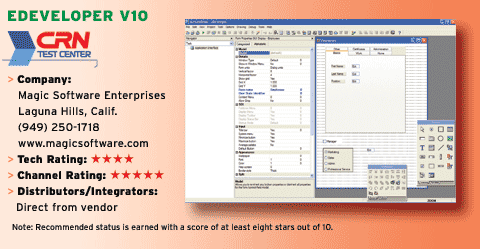ERP Enters Open-Source Renaissance
OpenMFG's open-source model abides by an exclusive source code distribution license, which lies in the middle between open-source and proprietary software. Essentially, solution providers have to buy the product to receive the code. Customers also receive the source code. According to the company, many partners contribute new features to the OpenMFG software.
OpenMFG's code is built on Postgres procedures and uses QT as its GUI. QT makes it quite easy to support any locale running on the same deployment. Customers running warehouses overseas can run the same OpenMFG install with multiple languages. OpenMFG's current version supports French and Spanish.
OpenMFG uses open-source OpenRPT and arrives with hundreds of reports. Out of the box, OpenMFG's reports support bar codes. The initial bar code is often implemented by solution providers that have experience integrating wedge bar-code readers with OpenMFG. Customers have not yet requested RFID.
Having the source code on hand opens up new opportunities not available in proprietary ERP solutions. For instance, during a presales cycle when solution providers perform gap analyses between customers' requirements and OpenMFG, they can offer to build new features that meet requirements not available in the software.
OpenMFG's security model is based on controlling access to each module, so every user has its own module access and privileges. Within a module, users can perform restricted activities according to privilege settings, so they can only work with what is visible to them. This is OpenMFG's way of segmenting workflows by dividing activities based on access rights. Setting up security is one of the jobs done by solution providers.
As companies grow and divide responsibilities more discreetly, they become more proactive at getting work done using electronic communication. OpenMFG supports event triggers, which form the basis for workflows. Users from any location within a company can subscribe to various events and can initiate work orders, sales orders and inventory control. When a user creates a sales order, for instance, a small visual warning pops up on the lower hand corner informing another user down the chain that an event has been triggered. By clicking on the small icon, the sales order open up.
To speed productivity, OpenMFG supports short keys, allowing users to create custom key mapping to activate any feature. During implementation, solution providers can create these mappings with simple flow diagrams so that users do not have to learn to navigate the system.
Users also can create near term projections on what to expect with inventory, supply and items on hand. By looking ahead a few days at quantity on hand, sales order allocations and expected receipts on work orders, users can provide precise availability dates to customers. Essentially, all the data collected from various locations goes through a netting process to help companies figure out lead time during manufacturing before showing availability of products to customers.
On any record display in OpenMFG there is a context-sensitive popup menu to help users track fields correctly. For a toy, for instance, users can be directed to a work order. Likewise, for a box to house a toy, users instead can initiate a purchase request or purchase order. Users can drill down three or four levels deep and easily extract data for offline analysis.
By default, OpenMFG supports external backup processes, allowing solution providers to integrate it with external backup peripherals.
The company's channel program is broken down into four levels: Referral Partner, Systems Integrator/VAR, Consultant and Development Partner. SI/VARs, Consultants and Development Partners must complete one session of OpenMFG training as a prerequisite to joining the partner program; training costs run $3,000 per year. Those partners have access to unlimited use of software and source code, geographic territories, unlimited pre- and post-sales support, co-marketing assistance and discounts on training. Partners can expect margins of 20 percent to 50 percent, which are based on lead source and overall annual sales volume. VARs and Development Partners can create new complementary products and sell through the OpenMFG community for additional revenue opportunities.
